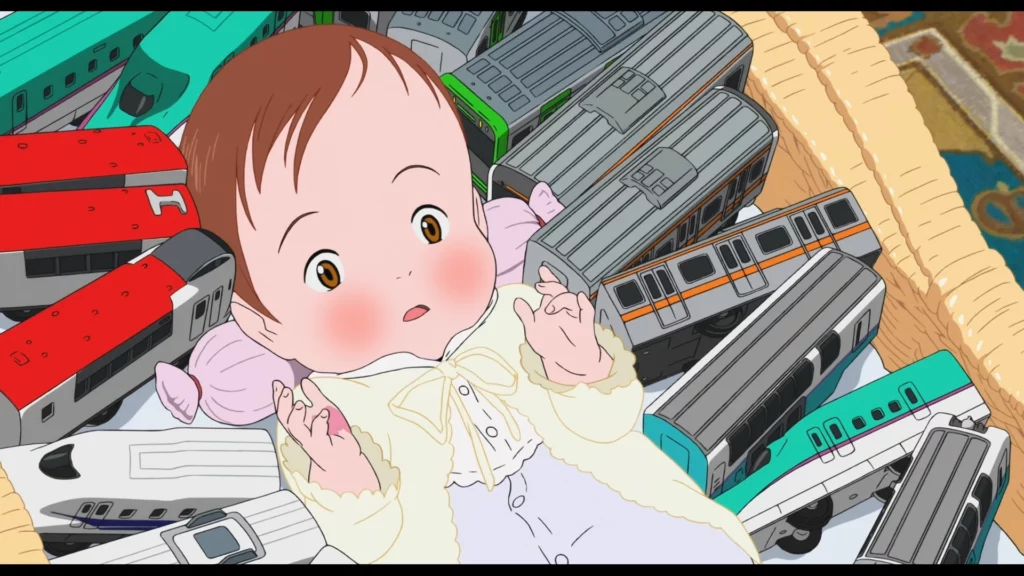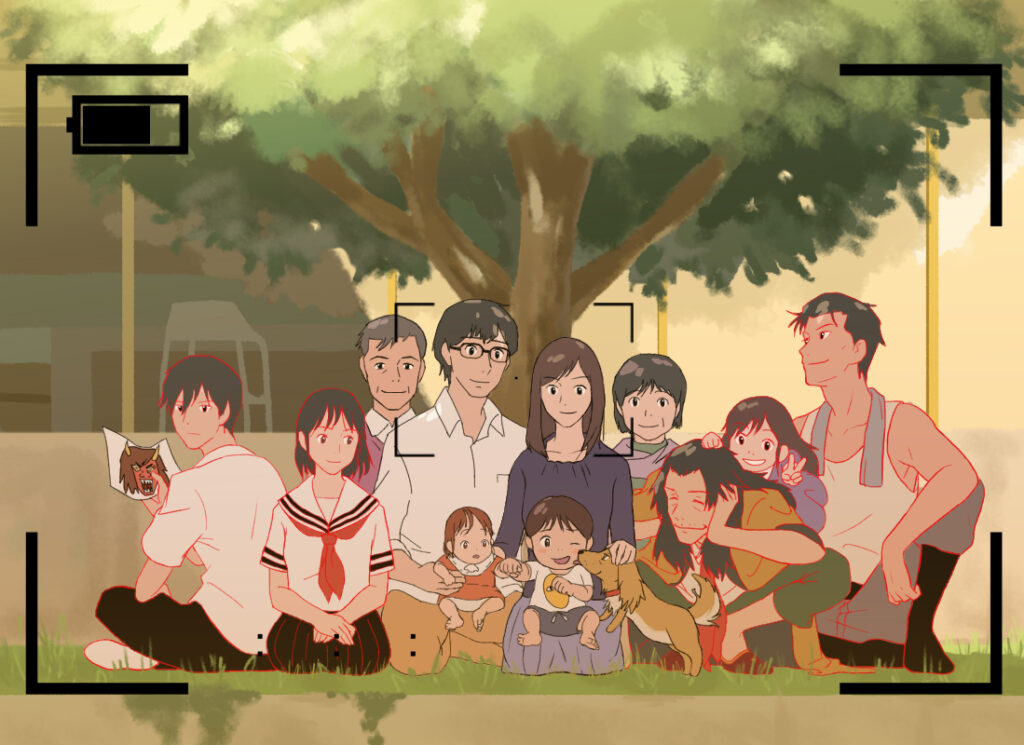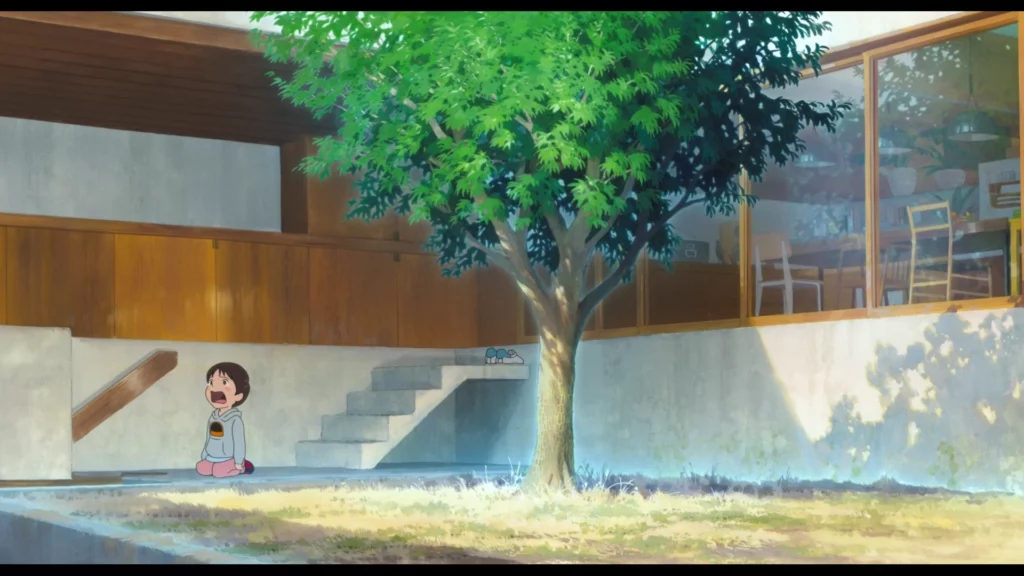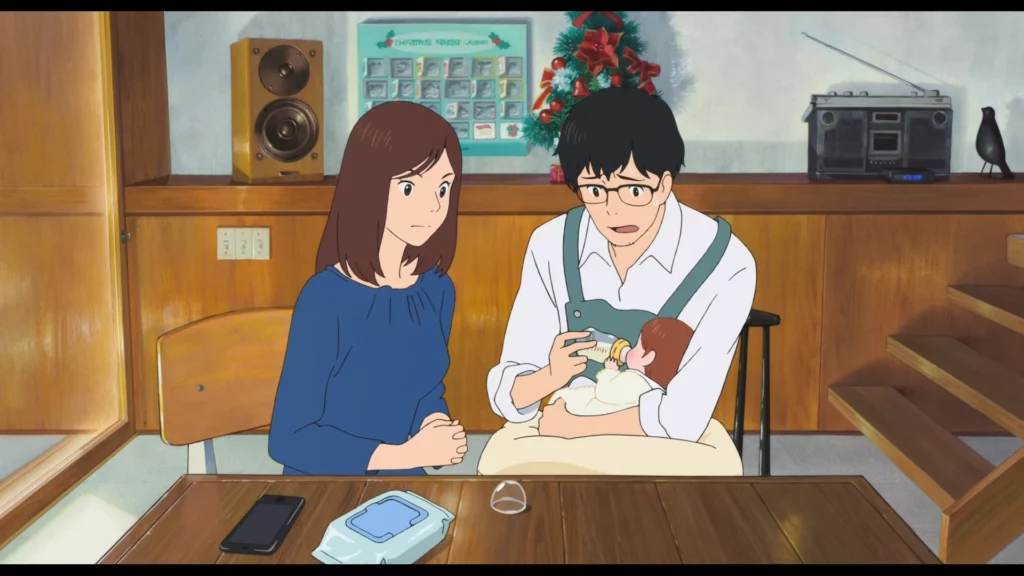Mirai (Mirai no Mirai in Japanese) tells the story about cherishing family, bonds, and present moments with a touch of the supernatural. Just like its title “Mirai” which means “Future”, the main character Kun journeys through time and encounters different family members at different stages of their lives. This narrative structure allows the film to delve into themes of empathy, understanding, and acceptance. Kun’s interactions with his family members, both past and future, serve as poignant life lessons, teaching him the value of his relationships and the complexities of the human experience.
About Mirai no Mirai
Mirai (2018) was directed and written by Mamoru Hosoda, a renowned anime filmmaker known for his emotionally charged storytelling, such as Wolf Children, The Boy and The Beast, and Belle. Produced by Studio Chizu, the film’s production involved a meticulous blend of traditional hand-drawn animation and modern techniques. The animation team focused on capturing the nuances of everyday life, ensuring authenticity in the characters’ expressions and movements. The film’s art direction, supervised by Takashi Omori, brought to life both the contemporary setting of the family home and the fantastical realms Kun explores during his time-traveling adventures. Composer Masakatsu Takagi crafted a moving score that complemented the film’s emotional depth. With Hosoda’s distinct storytelling style and the collaborative efforts of the production team, Mirai emerged as a visually stunning and thematically rich animated feature, garnering critical acclaim for its inventive narrative and heartfelt exploration of family dynamics.
Mirai no Mirai Plot
The film’s narrative is intricately woven, seamlessly blending elements of fantasy and reality. Kun’s time-traveling encounters with Mirai from the future and his relatives provide a unique perspective on their lives, revealing the challenges and joys they faced. The story beautifully captures the essence of childhood curiosity and the evolving dynamics within a family. The journey becomes a poignant exploration of self-discovery and the interconnectedness of generations.
Mirai no Mirai Characters
Kun’s character development is the heart of the story. His transformation from a petulant young boy to a compassionate older brother to Mirai, his younger sister, is portrayed with sincerity and authenticity. The other family members, including his parents and ancestors, are well-rounded characters whose stories contribute to the film’s emotional depth. Each character’s struggles and growth add layers to the overarching theme of family bonds.
Themes & Symbolism
Mirai is themed after family, identity, and the passage of time. The symbolism of the tree, representing the family’s history and interconnectedness, is a central motif throughout the film. The encounters with past and future family members serve as allegorical representations of the cyclical nature of life, emphasizing the importance of understanding one’s roots and appreciating the experiences that shape us.
Flaws
Honestly, I couldn’t find anything worth mentioning. The film is nicely paced with proper narrative implementation. It gives a laid-back and surreal vibe with the gorgeous art and animation. It’s rich with thematic narrative and ample character exploration. It may although feel a bit stale if you are not into this kind of stories. But overall, it’s a great experience to watch it all the way through.
Conclusion
Mirai is a visually enchanting and emotionally resonant film that offers a heartfelt exploration of family relationships and personal growth. Its inventive storytelling, coupled with well-developed characters and profound themes, makes it a standout work in the realm of animated cinema. Despite its narrative intricacies, the film’s ability to evoke genuine emotions and deliver valuable life lessons makes it a compelling and memorable viewing experience. I give this film a solid 8 out of 10.
Thank you so much for reading ♡. Check this out if you need more anime recommendations. Until next time, take care.











![[AnimeKayo] Mirai no Mirai_01_22_38.871](https://animekayo.com/wp-content/uploads/2023/11/AnimeKayo-Mirai-no-Mirai_01_22_38.871.webp)



